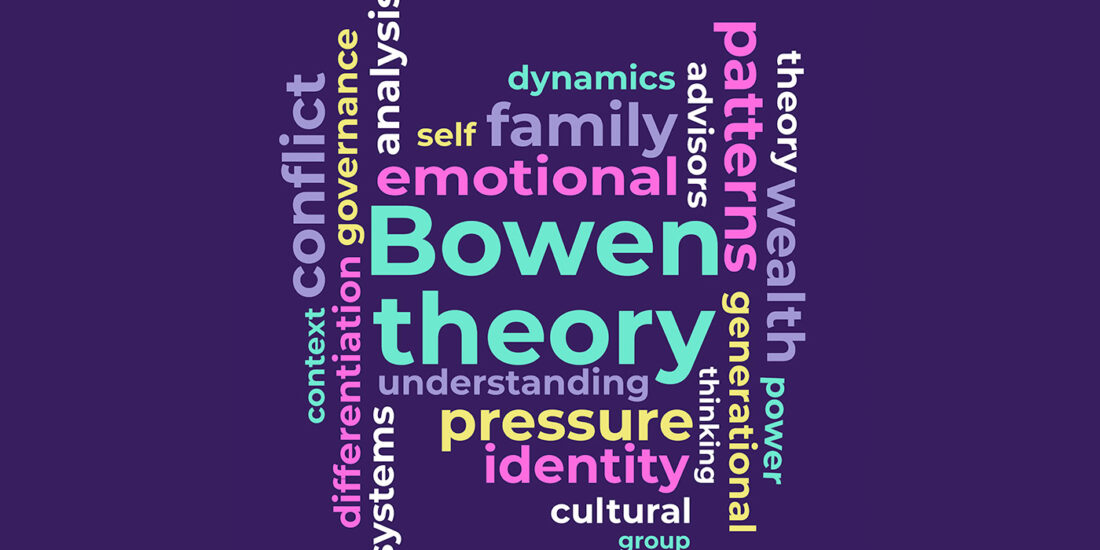
View this edition in our enhanced digital edition format with supporting visual insight and information.
Thank you to Asian Circle VSG members Keng-Fun Loh and Randel S. Carlock for this week’s FFI Practitioner. In this article, Loh and Carlock introduce their Communication360 Assessment tool to discuss the importance of healthy communication strategies within business families. Randel Carlock is presenting the session “The Enterprising Family: Creating a Family that Lasts Forever in a Turbulent New World” at the 2025 Global Conference.
Background
The thirty-eighth floor view of the Kuala Lumpur skyline is spectacular, but no one is paying attention as the heirs of a seventy-five-year-old real estate empire nearly come to blows at a board meeting. The eldest son, Patrick, who has been groomed to replace his father, is upset with his sister Anna, a pediatrician who has never worked in the family business, for again criticizing his plans.
“You don’t even work here,” he snaps. Anna fires back: “This deal contradicts everything our family stands for.” Decades of buried resentments and misunderstood intentions bring the meeting to an end without further discussion of Patrick’s proposal as Datuk Lim,* the ninety-year-old patriarch, watches in dismay. He fears their conflicts and rivalry may destroy the firm he spent his life building.
Unproductive communication practices, hierarchies, and unspoken expectations are often a reality in Asian families. Divergent expectations of how to communicate effectively can often result in family conflicts and lost opportunities that can hinder the enduring success of a family enterprise.
Historically, many powerful Asian CEOs and leaders have never had to worry about family communication impacting the business’s success, because they were the head of both the family and the business. Today, younger generations frequently expect more egalitarian relationships, creating challenging leadership planning for the next generation. Older generation members might assume that everything is fine, while younger members might feel stifled, unheard, and uncertain about how to raise difficult topics without lighting a fire.
Why Asian Families Struggle with Communication
When multigenerational Asian families were surveyed using the Communication360 assessment,1 the results illustrated a consistent disparity: senior generations rated the family’s communication effectiveness higher than the younger generations. The grandfather might think everyone’s having honest conversations. The granddaughter? She has been quietly biting her tongue for years.
The Hierarchy Trap
This gap isn’t just generational—it’s psychological. Senior members often sit in positions of power, and this power shapes their perception. Research shows people in authority often overestimate the transparency and effectiveness of their communication.2
In Asia, next-generation family members self-censor to avoid “disrespecting” their elders. For example, when responding to this assessment, one next-generation member wrote, “I’ve had concerns for years, but mentioning them would be like critiquing Dad’s karaoke singing—technically true, socially suicidal.”
The Elephant in the Boardroom
Enterprising families can talk all day about shipping routes and market share, but mention succession or a change in leadership, and the air thickens. They may speak every day—debating for hours at the dinner table which restaurant serves the best chicken rice, resolving the business’s operational issues, planning celebration surprises—but they avoid the most important conversations, like who will run the company next or why the recently graduated cousin was made the vice president of business development.
From Insights to Action: Creating a Family Code of Conduct
Once the family communications are better understood, many successful families strive to translate their newfound self-awareness into systemic change by developing a Family Code of Conduct and agreeing on clear guidelines for effective communication.
Using the Communication360 Feedback Report, the advisor can facilitate a discussion to identify the family’s communication strengths and areas for improvement as well as two or three behaviors that would improve communications. These behaviors associated with the family’s communication practices could then be included in their broader Code of Conduct.
How This Works in Practice: Stories from the Field
The Widjaja* family, who own a third-generation transportation business in Indonesia, had a practice of avoiding potentially difficult conversations between generations—until they saw the results of the stark divide through raw data.
Members of G3 (ages 20–35) scored “We listen to understand” 2.1 out of 5, while their parents (ages 50–65) gave it a 4.7. Seeing this massive divergence in perception now compelled the family to address their differences.
The ensuing family meeting was emotionally charged but transformative. Members of the second generation realized that younger members seemed disengaged and uncommitted in previous meetings because they felt overruled and unheard. Inspired by the comments in their feedback report, the family created a Code of Conduct emphasizing “listening without judgement (including managing body language, especially facial expressions),” and “using ‘I’ statements.”
As an action item, each of the family members also agreed to take another assessment to assess their own listening skills as a part of their ongoing personal development. Three months later, the family reported fewer conflicts and more productive family meetings.
Tips for Advisors
Despite the ongoing development of AI technology that, at some point, may be able generate communicate insights for each family member, for the time being, there’s no tech that can replace the well-prepared advisor—the one who knows when to push, pause, and pivot.
Below are a few tips for advisors who want to embrace technology, data, and self-reflection on communication styles into their practice.
- Normalize the discomfort of facing real feedback.
- Frame the assessment as a growth opportunity, not a verdict.
- Use reports to guide—not dictate—the conversation.
- Offer individual coaching or professional referrals when needed.
- Celebrate small wins to build momentum.
The strongest families prioritize trust—not by chance, but by their actions. And advisors provide new tools to guide them.
*Names changed for privacy
References
1 “Family and Business Learning Online 360 Tools,” Family and Business Learning, 2024, at www.fab-learning.com.
2 Galinsky, Adam D., Joe C. Magee, M. Ina Inesi, and Deborah H. Gruenfeld. “Power and Perspectives Not Taken.” Psychological Science 17, no. 12 (2006): 1068-1074. https://doi.org/10.1111/j.1467-9280.2006.01824.x.
About the Contributors

Keng-Fun Loh, FFI Fellow has developed an AI-powered digital platform for family enterprise planning, available in thirteen languages. A former Citi/Credit Suisse executive and INSEAD educator, as well as the former chair of the FFI Asian Circle VSG, Loh co-authored A Family Business on the Moon and developed an early interactive 360° assessment tool. She can be reached at kfun.loh@gmail.com.

Randel S. Carlock, FFI Fellow, was the first Berghmans Lhoist Chaired professor at INSEAD. His work combines NASDAQ CEO experience with family and marriage therapy training from King’s College and Harvard. He is the author of six books, including When Family Businesses Are Best and the forthcoming Enterprising Family Intelligence: Reimagining Family Business for the 21st Century. He can be reached at randel.carlock@insead.edu. He will be presenting “The Enterprising Family: Creating a Family that Lasts Forever in a Turbulent New World” on October 31 at the FFI Global Conference in Boston.

View this edition in our enhanced digital edition format with supporting visual insight and information.





